Enzymes(酶)
Enzymes are very efficient and specific catalyst proteins which react with 1 or few types of substrates in biochemical reactions and are responsible for bringing about almost all of the chemical reactions in living organisms. Enzymes speed up reactions by providing an alternative reaction pathway of lower activation energy. Without enzymes, reactions take place at a rate far too slow for the pace of metabolism which means that they speed up the chemical reactions in living things.
There are 2 types of enzymes, ones that help join specific molecules together to form new molecules & others that help break specific molecules apart into separate molecules. Enzymes play many important roles ouside the cell as well. One of the best examples of this is the digestive system. For instance, it is enzymes in your digestive system that break food down in your digestive system break food down into small molecules that can be absorbed by the body. Some enzymes in your digestive system break down starch, some proteins and others break down fats. The enzymes used to digest our food are extra-cellular since they are located outside our cells & enzymes inside our cells are intra-cellular enzymes. Enzymes are used in ALL chemical reactions in living things; this includes respiration, photosynthesis, movement growth, getting rid of toxic chemicals in the liver and so on. Enzymes are proteins that must have the correct structure to be active. They are very easily affected by heat, pH and heavy metal ions.
Ribonucleoprotein enzyme catalytic activity is located in the protein part but for some the catalytic activity is in the RNA part. A catalyst is any substance which makes a chemical reaction go faster, without itself being changed. A catalyst can be used over and over again in a chemical reaction and does not get used up.
Enzymes lower the amount of activation energy needed by binding to the reactants of the reaction they catalyze, thus speed up the reaction and can process millions of molecules per second. Enzymes are typically large proteins with high molecular weight that permit reactions to go at conditions that the body can tolerate.
Enzyme nomenclature is based on what the enzyme reacts with & how it reacts along with the ending ase.
Enzymes must get over the activation energy hurdle.
Enzymes change how a reaction will proceed which reduces the activation energy and makes it faster. The more we increase the enzyme concentration the faster the reaction rate for non-catalyzed reactions. Enzymes that are catalyzed reactions also increase reaction rate at higher level of concentration but up to a certain point called Vmax which means that the enzyme has reached its maximum point. The reaction is limited by both the concentrations of the enzyme and substrate. Enzymes as catalysts take part in reactions which provide an alternative reaction pathway. Enzymes do not undergo permanent changes and remain unchanged at the end of the reaction. They only change the rate of reaction, not the position of the equilibrium.Enzymes as catalysts are highly selective by only catalysing specific reactions due to the shapes of the enzyme’s molecule.
Enzymes contain a globular protein part called apoenzyme and a non-protein part named cofactor or prosthetic group or metal-ion-activator. Changes in temperature and pH have great influence on the intra- and intermolecular bonds that hold the protein part in their secondary and tertiary structures.
Examples of cofactors are 1. Prosthetic group that are permanently bound to the enzyme. 2. Activator group which are cations (positively charged metal ions) & temporarily bind to the active site of the enzyme. 3.Coenzymes, usually vitamins or made from vitamins which are not permanently bound to the enzyme molecule, but combine with the enzyme-substrate complex temporarily. Enzymes require the presence cofactors before their catalytic activity can be exerted. This entire active complex is referred to as the holoenzyme.
Without enzymes, our guts would take weeks to digest our food, our muscles, nerves and bones would not work properly and so on…
Main Enzyme category groups:
Oxidoreductases:
All enzymes that catalyse oxido-reductions belong in this class. The substrate oxidized is regarded as a hydrogen or electron donor. The classification is based on 'donor:acceptor oxidoreductase'. The common name is 'dehydrogenase', wherever this is possible; as an alternative, 'acceptor reductase' can be used. 'Oxidase' is used only where O2 is an acceptor. Classification is difficult in some cases, because of the lack of specificity towards the acceptor.
Transferases:
Transferases are enzymes that transfer a group, for example, the methyl group or a glycosyl group, from one compound (generally regarded as donor) to another compound (generally regarded as acceptor). The classification is based on the scheme 'donor:acceptor grouptransferase'. The common names are normally formed as 'acceptor grouptransferase' or 'donor grouptransferase'. In many cases, the donor is a cofactor (coenzyme) that carries the group to be transferred. The aminotransferases constitute a special case.
Hydrolases:
These enzymes catalyse the hydrolysis of various bonds. Some of these enzymes pose problems because they have a very wide specificity, and it is not easy to decide if two preparations described by different authors are the same, or if they should be listed under different entries. While the systematic name always includes 'hydrolase', the common name is, in most cases, formed by the name of the substrate with the suffix -ase. It is understood that the name of the substrate with this suffix, and no other indicator, means a hydrolytic enzyme. It should be noted that peptidases have recommended names rather than common names.
Lyases:
Lyases are enzymes that cleave C-C, C-O, C-N and other bonds by means other than by hydrolysis or oxidation. They differ from other enzymes in that two (or more) substrates are involved in one reaction direction, but there is one compound fewer in the other direction. When acting on the single substrate, a molecule is eliminated and this generates either a new double bond or a new ring. The systematic name is formed according to 'substrate group-lyase'. In common names, expressions like decarboxylase, aldolase, etc. are used. 'Dehydratase' is used for those enzymes that eliminate water. In cases where the reverse reaction is the more important, or the only one to be demonstrated, 'synthase' may be used in the name.
Ligases:
Ligases are enzymes that catalyse the joining of two molecules with concomitant hydrolysis of the diphosphate bond in ATP or a similar triphosphate. 'Ligase' is often used for the common name, but, in a few cases, 'synthase' or 'carboxylase' is used. 'Synthetase' may be used in place of 'synthase' for enzymes in this class.
Products for Enzymes
- 41701(11)
- Activating Transcription Factor(3)
- Adenylate Kinase(10)
- AHCY(3)
- Aldolase(9)
- Asparaginase(5)
- Aurora Kinase(18)
- Beta Lactamase(3)
- Calcium and Integrin Binding(2)
- Calcium/Calmodulin-Dependent Protein Kinase(4)
- Carbonic Anhydrase(49)
- Casein Kinase(36)
- Cathepsin(52)
- Chitinase(5)
- Creatin Kinases(9)
- Cyclin(7)
- Cyclin-Dependent Kinase(18)
- Cyclophilin(23)
- Deaminase(14)
- Decarboxylase(12)
- Dehydrogenase(96)
- Discoidin Domain Receptor Tyrosine Kinase(2)
- DNA Polymerase(4)
- EGF Receptor(3)
- Endonuclease(6)
- Enolase(10)
- Enterokinase(5)
- Epimerase(3)
- Esterase(15)
- FGF Receptors(12)
- FK506 Binding Protein(10)
- Fructosamine 3 Kinase(2)
- Galactosidase(5)
- Glucosidase(32)
- Gluteradoxin(7)
- Glycogen synthase kinase(2)
- Glycosylase(10)
- Glyoxalase(3)
- Granzyme(7)
- Guanylate Kinase(2)
- Heparanase(2)
- Histone Deacetylase(3)
- Hydratase(10)
- Hydrolase(33)
- Hydroxylase(6)
- Isomerase(26)
- Jun N-terminal Kinase(1)
- Jun Proto-Oncogene(2)
- Kallikrein(26)
- Ligase(4)
- Lipase(14)
- Lipocalin(6)
- Lyase(9)
- LYVE1(3)
- Mitogen-Activated Protein Kinase(16)
- MMP(68)
- Mutase(11)
- Natural Enzymes(4)
- Nuclease(18)
- Nucleotidase(4)
- Nudix Type Motif(11)
- Other Enzymes(63)
- Oxidase(23)
- Oxygenase(12)
- Paraoxonase(3)
- Peptidase(41)
- Peroxiredoxin(10)
- Phosphatase(150)
- Phosphorylase(9)
- PI3-kinase(5)
- Polymerase(13)
- PPARG(2)
- Protease(15)
- Proteasome(54)
- Protein Kinase Akt1/PKB alpha(4)
- Protein Kinase-A(7)
- Protein Kinase-C(3)
- Protein Kinases(86)
- Protein Tyrosine Phosphatase(10)
- Reductase(60)
- Secreted Phospholipase A2(10)
- Serine Threonine Kinase(4)
- Sulfatase(8)
- Synthase(23)
- Synthetase(33)
- TGFBR(3)
- TGM2(3)
- TIMP(10)
- TPA(4)
- Transferase(156)
- Tyrosine Kinase(9)
- Ubiquitin Conjugating Enzyme(39)
- Uromodulin(4)
- VEGF Receptors(14)
- Transaminase(19)
- Hexokinase(6)
- TIE1(6)
- Cat.No. 产品名称 Information
-
GP21476
CES1 Human
Carboxylesterase 1 Human Recombinant

-
GP21478
CES1D Mouse
Carboxylesterase 1D Mouse Recombinant

-
GP21477
CES1G Mouse
Carboxylesterase 1G Mouse Recombinant

-
GP26138
CES2E Mouse
CES2E Mouse produced in Sf9 Baculovirus cells is a single, glycosylated polypeptide chain containing 541 amino acids ( 27-559 aa) and having a molecular mass of 60

-
GP21481
CHI3L1 (22-383) Human
Chitinase 3-Like 1 (22-383 a.a) Human Recombinant

-
GP21480
CHI3L1 Human
Chitinase 3-Like 1 Human Recombinant

-
GP21482
CHI3L2 Human
Chitinase 3-Like 2 Recombinant

-
GP21483
CHI3L2 Human, Sf9
Chitinase 3-Like 2 Human Recombinant, Sf9

-
GC62145
Chiauranib
CS2164
Chiauranib (CS2164) selectively inhibits multiple kinase targets aurora B kinase (AURKB), colony-stimulating factor 1 receptor (CSF1R), and vascular endothelial growth factor receptor (VEGFR)/platelet-derived growth factor receptor (PDGFR)/c-Kit , thereby inhibiting the rapid proliferation of tumor cells, enhancing the antitumor immunity, and inhibiting tumor angiogenesis, to achieve the anti-tumor efficacy.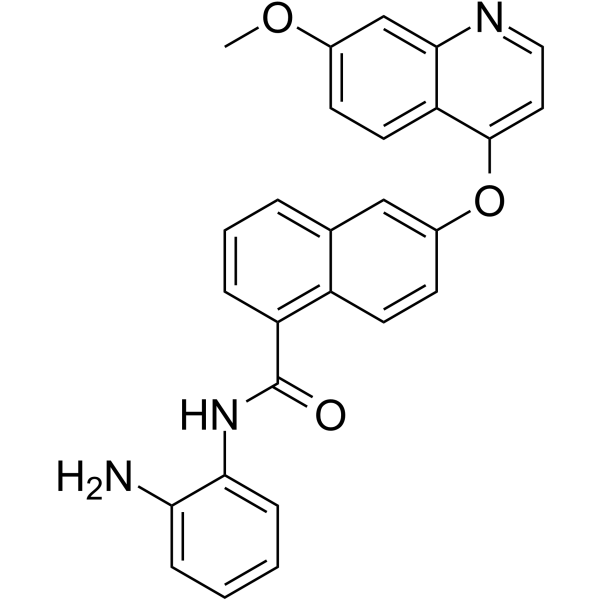
-
GP21479
Chitinase Protein
Chitinase Clostridium Paraputrificum Recombinant

-
GP21484
Chitodextrinase
Chitodextrinase Clostridium Botulinum Recombinant

-
GC60706
Chrysophanol triglucoside
大黄酚-1-O-Β-三葡萄糖苷
Chrysophanoltriglucoside是一种从决明子中分离出的蒽醌类化合物,可抑制蛋白酪氨酸磷酸酶1B(PTP1B)和α-glucosidase,IC50值分别为80.17和197.06µM。Chrysophanoltriglucoside具有糖尿病研究的潜力。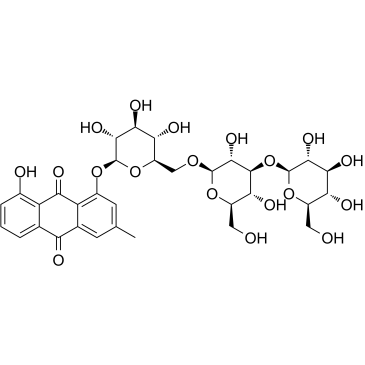
-
GP21485
CHST10 Human
Carbohydrate Sulfotransferase 10 Human Recombinant

-
GP26139
CHST3 Human
CHST3 produced in Sf9 Baculovirus cells is a single, glycosylated polypeptide chain containing 450 amino acids (39-479

-
GP26140
CHST5 Human
CHST5 Human produced in Sf9 Baculovirus cells is a single, glycosylated polypeptide chain containing 380 amino acids (27-395 a

-
GP22453
CIB1 Human
Calcium and Integrin Binding 1 Human Recombinant

-
GP22454
CIB2 Human
Calcium and Integrin Binding 2 Human Recombinant

-
GP22455
CINP Human
Cyclin-Dependent Kinase 2 Interacting Protein Human Recombinant

-
GC73500
CK1-IN-2
CK1-IN-2(化合物rn .4)是一种有效的CK1抑制剂,对CK1a、CK1d、CK1e和p38a的IC50值分别为123、19.8、26.8和74.3 nM。

-
GC62337
CK2 inhibitor 2
CK2 inhibitor 2 是一种有效的,选择性和具有口服活性的 CK2 抑制剂,IC50 值为 0.66 nM。CK2 inhibitor 2 对 Clk2 (IC50=32.69 nM)/CK2 显示出高选择性。 CK2 inhibitor 2 具有良好的抗增殖和抗肿瘤活性。
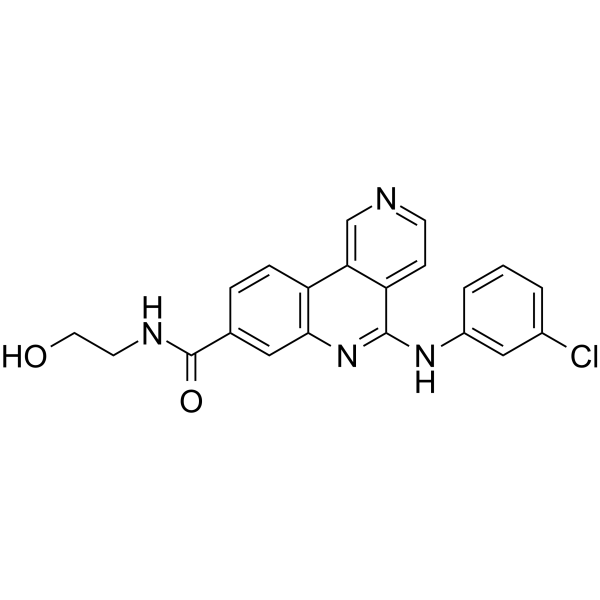
-
GC39485
CK2/ERK8-IN-1
A dual inhibitor of CK2 and ERK8
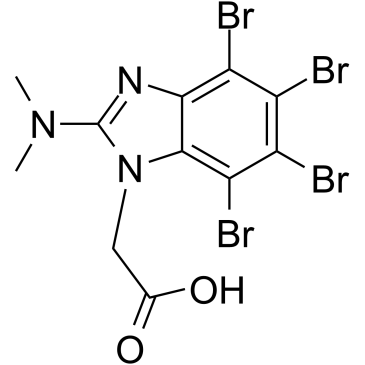
-
GP22663
CK2a Zea Mays
Casein Kinase 2 alpha Zea Mays Recombinant

-
GP22459
CK2h Human
Casein Kinase 2 Holoenzyme Human Recombinant

-
GP22460
CKB Human
Creatine Kinase Brain Human Recombinant

-
GP22462
CKB Human His
Creatine Kinase Brain Human Recombinant, His Tag

-
GP22461
CKB Human, Pichia
Creatine Kinase Brain Human Recombinant, Pichia

-
GP22463
CKM Human
Creatine Kinase Muscle Human

-
GP22466
CKMBITI Human
Creatine Kinase MB Isoenzyme Type-I Human Recombinant

-
GP22467
CKMBITII Human
Creatine Kinase MB Isoenzyme Type-II Human Recombinant

-
GP22464
CKMT1 Human
Creatine Kinase Muscle Type-1 Human Recombinant

-
GP22468
CKMT1A Human
Creatine Kinase, Mitochondrial 1A Human Recombinant

-
GP22469
CKMT2 Human
Creatine Kinase, Mitochondrial 2 Human Recombinant

-
GP22465
CKMT3 Human
Creatine Kinase Muscle Type-3 Human Recombinant

-
GP22470
CKS2 Human
CDC28 Protein Kinase 2 Human Recombinant

-
GP21486
CLPP Human
ClpP Caseinolytic Peptidase Human Recombinant

-
GP21487
CMBL Human
Carboxymethylenebutenolidase Human Recombinant

-
GC62347
CMC2.24
TRB-N0224
CMC2.24 (TRB-N0224) 是一种口服活性三羰基甲烷制剂,通过抑制 Ras 及其下游效应子 ERK1/2 途径对小鼠胰腺肿瘤有效。CMC2.24 也是一种有效的锌依赖性 MMPs 抑制剂,IC50 范围为 2.0-69 μM。CMC2.24 通过恢复软骨内稳态和通过NF-κB/HIF-2α 轴抑制软骨细胞凋亡来减轻骨关节炎的进展。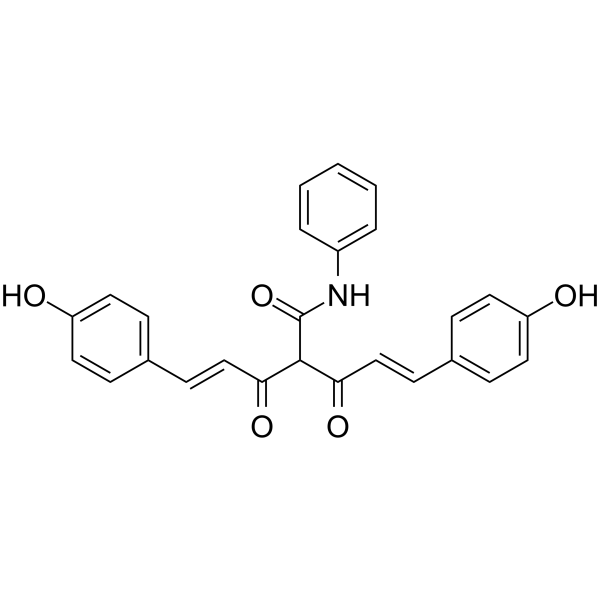
-
GP22471
CMPK1 Human
Cytidine Monophosphate Kinase 1 Human Recombinant

-
GP21488
CNDP1 Human
CNDP Dipeptidase 1 Human Recombinant

-
GP21489
CNDP1 Human, Active
CNDP Dipeptidase 1 Human Recombinant, Active

-
GP21490
CNDP1 Mouse
CNDP Dipeptidase 1 Mouse Recombinant

-
GP21491
CNDP2 Human
CNDP Dipeptidase 2 Human Recombinant

-
GP22472
COAA E.Coli
Pantothenate Kinase E.Coli Recombinant

-
GP21492
COMT Human
Catechol-O-Methyltransferase Human Recombinant

-
GP21493
COQ9 Human
Coenzyme Q9 Human Recombinant

-
GP21494
CPA4 Human
Carboxypeptidase A4 Human Recombinant

-
GP21462
CPE Human
Carboxypeptidase-E Human Recombinant

-
GP21495
CPOX Human
Coproporphyrinogen Oxidase Human Recombinant

-
GC62909
CPT-157633
CPT-157633 是一种二氟膦酰基甲基苯丙氨酸衍生物,是 PTP1B 抑制剂。 CPT-157633 可防止酗酒引起的葡萄糖耐受不良。
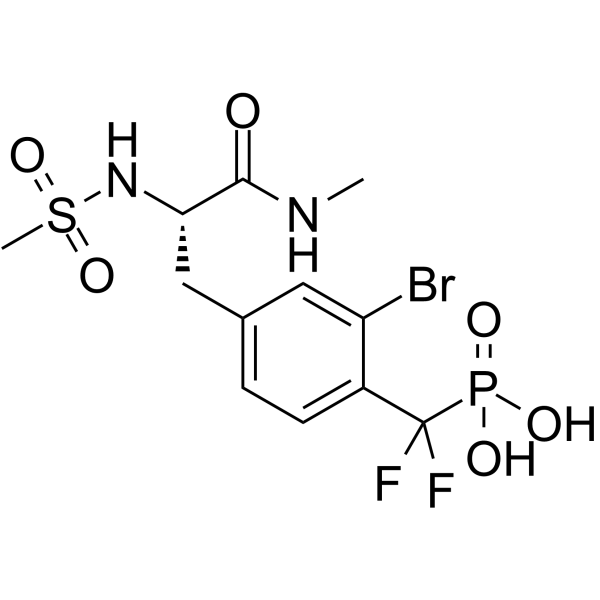
-
GP21496
CRYZL1 Human
Quinone Oxidoreductase-like Protein 1 Human Recombinant





